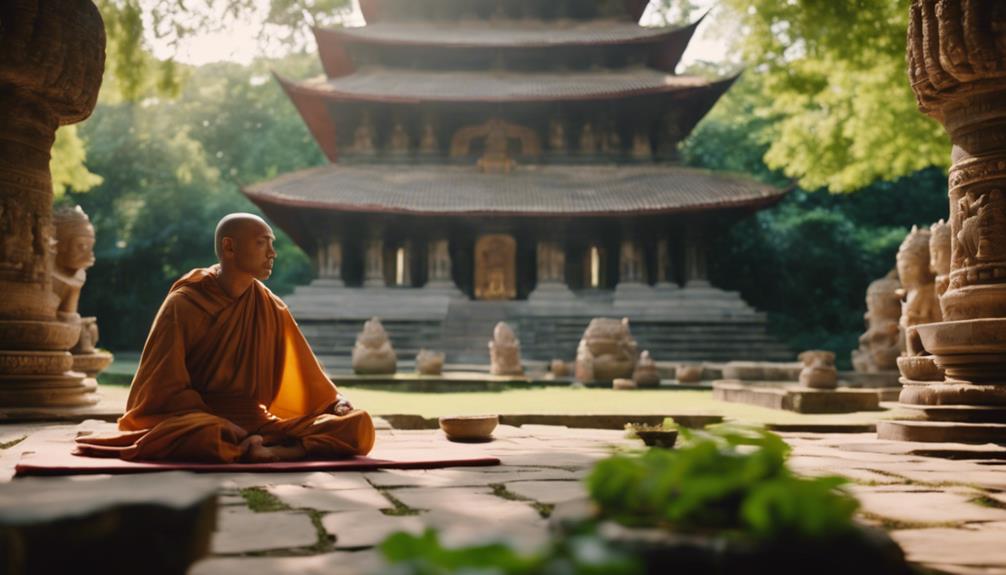Somatic Yoga

What is Somatic Yoga? Understanding the Basics
Somatic yoga is an innovative approach that integrates traditional yoga practices with somatic awareness, emphasizing the connection between the mind and body. Unlike conventional yoga, which often focuses on postures and alignment, somatic yoga encourages practitioners to explore their internal experiences and sensations. This technique fosters a mindful awareness of bodily movements, helping individuals to release tension and improve their overall well-being. By incorporating somatic principles, yoga practitioners can experience a deeper connection to their physical selves, leading to a more holistic practice.
The Benefits of Somatic Yoga: Healing the Body and Mind
Practicing somatic yoga offers numerous benefits for both the body and mind. One of the most significant advantages is stress relief. By focusing on the sensations within the body, practitioners learn to identify and release tension, promoting relaxation and a sense of calm. Additionally, somatic yoga enhances body awareness, allowing individuals to recognize patterns of movement that may contribute to discomfort or pain. These insights can lead to improved posture, increased flexibility, and greater physical resilience. Furthermore, the meditative aspects of somatic yoga can improve mental clarity, emotional regulation, and overall mood, making it a powerful tool for personal growth and healing.
How Somatic Yoga Differs from Traditional Yoga
While both somatic and traditional yoga share roots in ancient practices, their approaches and goals differ significantly. Traditional yoga often emphasizes the execution of specific poses (asanas) and alignment principles, which can sometimes lead to a focus on external appearances and performance. In contrast, somatic yoga prioritizes internal sensations and experiences, encouraging practitioners to tune into their bodies and cultivate self-awareness. This inward focus allows for a more personalized practice, where individuals can adapt movements based on their unique needs and comfort levels. Ultimately, somatic yoga promotes a deeper understanding of one’s body, fostering a more intuitive and compassionate relationship with oneself.
Getting Started with Somatic Yoga: Tips for Beginners
If you’re interested in exploring somatic yoga, getting started is easier than you might think. First, find a qualified instructor who specializes in somatic practices, as they can guide you through the nuances of this approach. Many studios offer classes specifically tailored to somatic yoga, which can provide a supportive environment for your journey. Begin by setting aside time for your practice and creating a comfortable space free from distractions. As you start, focus on gentle movements and breathing techniques, allowing yourself to connect with your body without judgment. Remember, the goal of somatic yoga is not to achieve perfection but to cultivate awareness and understanding of your unique physical experience.
Related Posts:
Incorporating Somatic Yoga into Your Daily Routine
Integrating somatic yoga into your daily life can significantly enhance your overall well-being. To do this effectively, consider setting aside a few minutes each morning or evening for a dedicated practice. You can begin with simple movements, such as gentle stretches or deep breathing exercises, to awaken your body and mind. Throughout the day, take brief moments to check in with your body, noticing any areas of tension or discomfort. This awareness can serve as a reminder to practice self-care, whether that means taking a break, stretching, or practicing mindfulness. By incorporating somatic yoga into your routine, you create an ongoing dialogue with your body, fostering a greater sense of connection and balance in your life.
The Role of Breath in Somatic Yoga Practice
Breath plays a crucial role in somatic yoga, serving as a bridge between the mind and body. In somatic practices, breath awareness helps practitioners access deeper states of relaxation and presence. Focusing on your breath allows you to tune into your body’s sensations more fully, enhancing the overall experience of each movement. Techniques such as diaphragmatic breathing can promote relaxation and reduce stress, while intentional breath patterns can energize the body and facilitate a deeper exploration of movement. By integrating breathwork into your somatic yoga practice, you not only enhance your physical experience but also cultivate a greater sense of calm and clarity.
Somatic Yoga for Specific Populations: Tailoring the Practice
Somatic yoga is adaptable and can be beneficial for a wide range of populations, including those recovering from injury, individuals with chronic pain, and even seniors seeking gentle movement. For those with physical limitations, somatic yoga offers a safe and nurturing way to explore movement without the risk of injury. Instructors can tailor classes to meet the specific needs of participants, ensuring that everyone feels comfortable and supported in their practice. Additionally, somatic yoga can be beneficial for mental health, helping individuals manage anxiety and depression through mindful movement and breath awareness. This adaptability makes somatic yoga a valuable tool for promoting health and well-being across diverse populations.
Conclusion: Embracing the Journey of Somatic Yoga
In conclusion, somatic yoga is a powerful practice that invites individuals to deepen their connection to their bodies and minds. By focusing on internal sensations and cultivating self-awareness, practitioners can experience a multitude of benefits, from stress relief to improved physical resilience. As you embark on your journey with somatic yoga, remember that the practice is not about achieving perfection but embracing the process of self-discovery and growth. With patience and dedication, somatic yoga can transform your relationship with your body, leading to a more balanced and fulfilling life. Whether you’re a seasoned yogi or a newcomer, somatic yoga offers a unique and enriching experience that can enhance your overall well-being.What Yoga Burns The Most CaloriesIs There A Free Chair Yoga AppBest Yoga Retreats